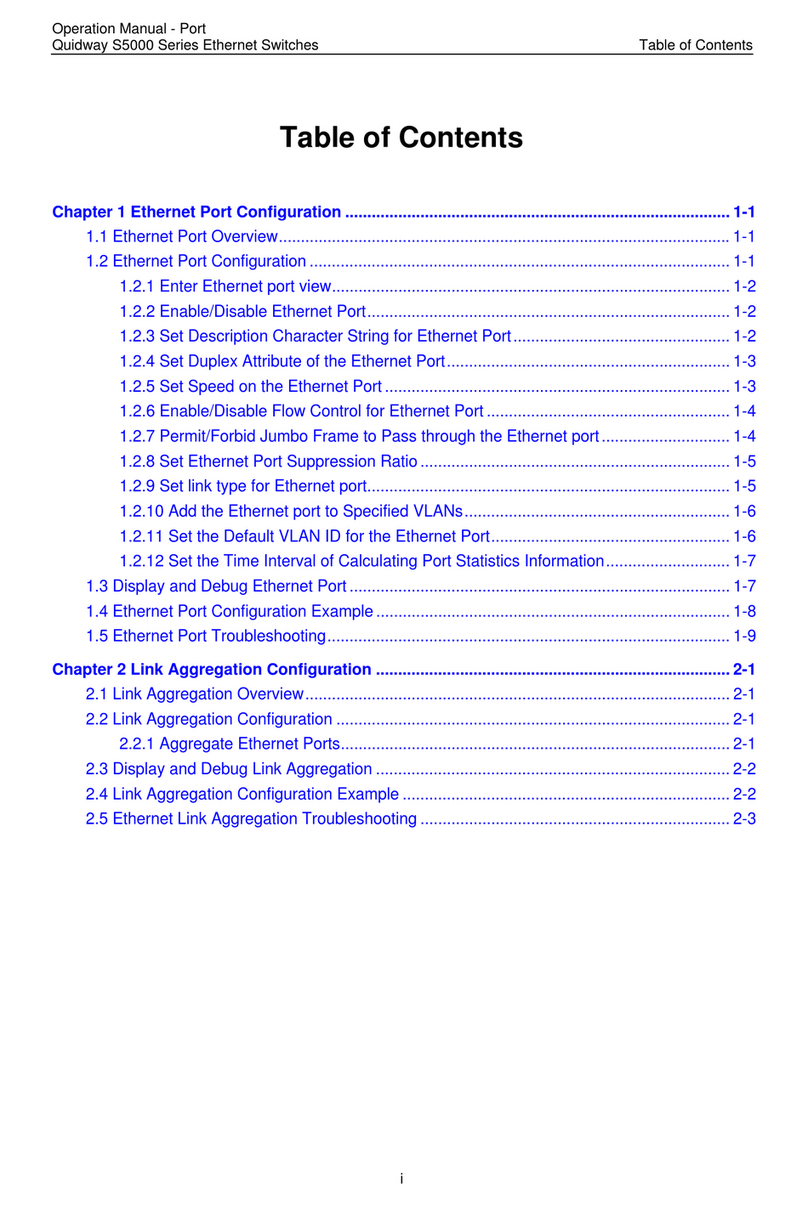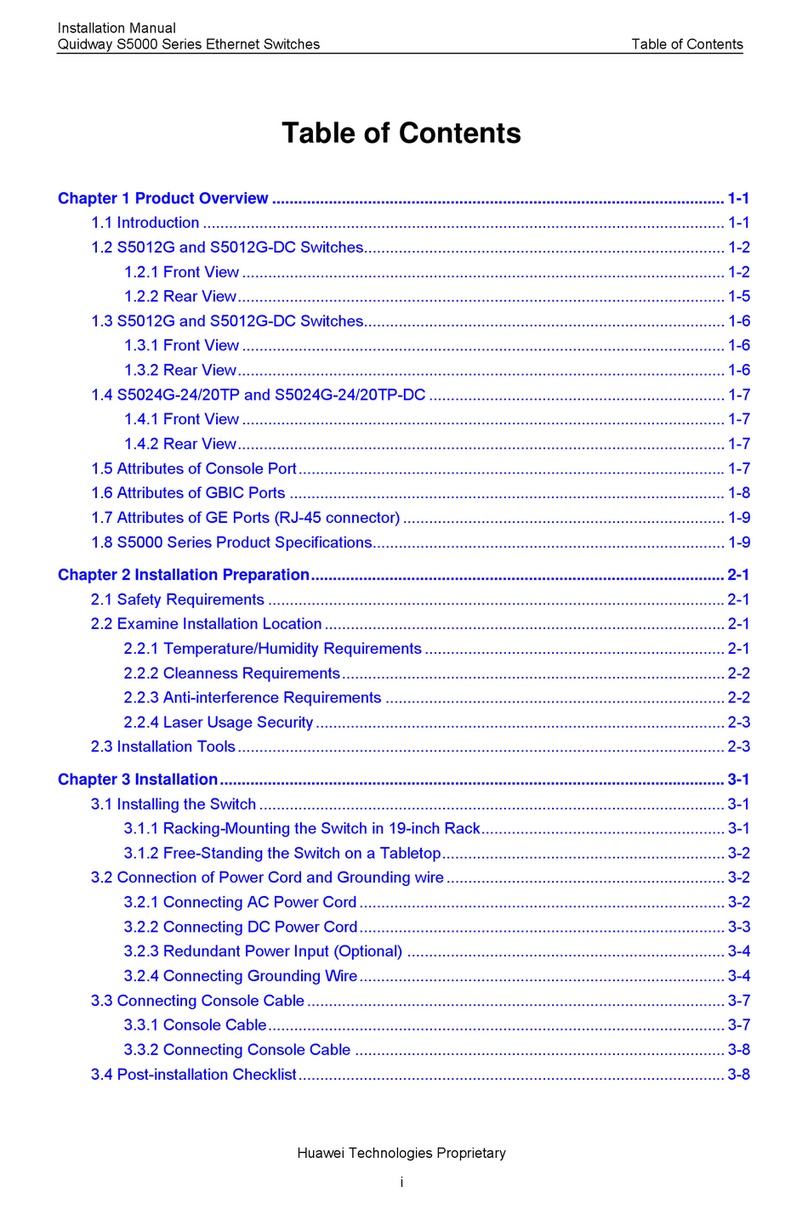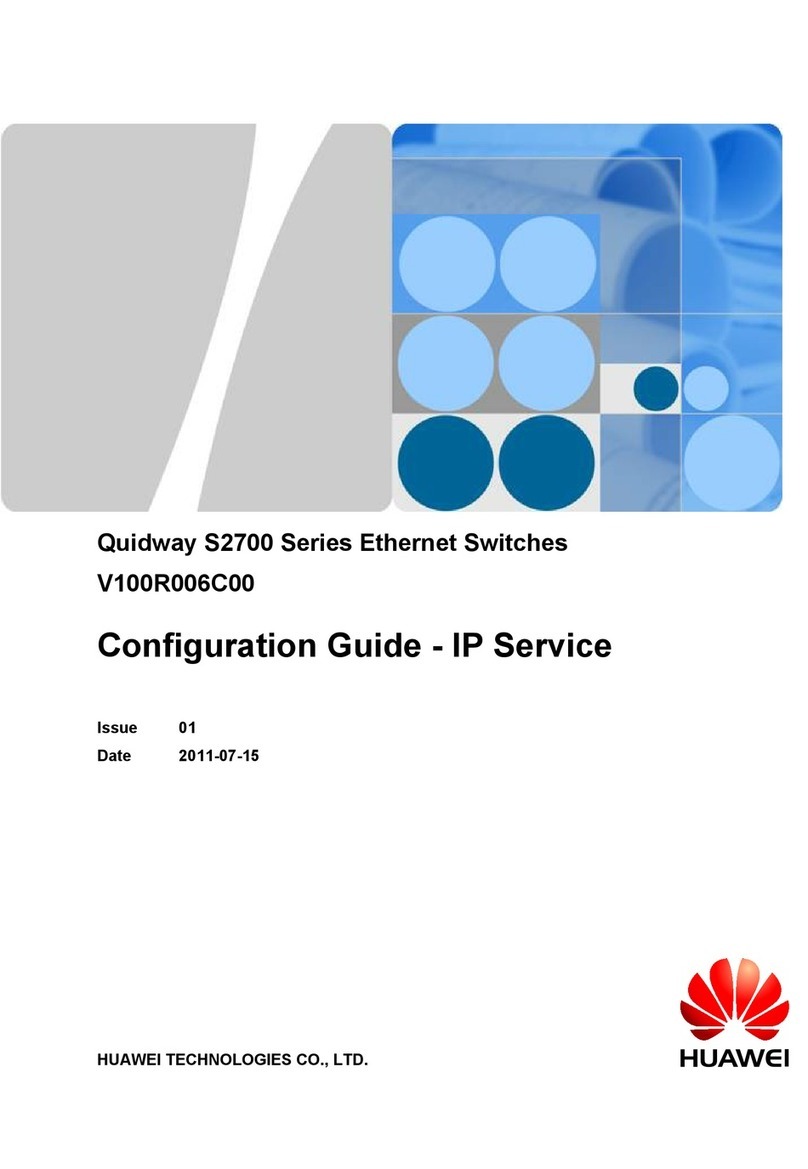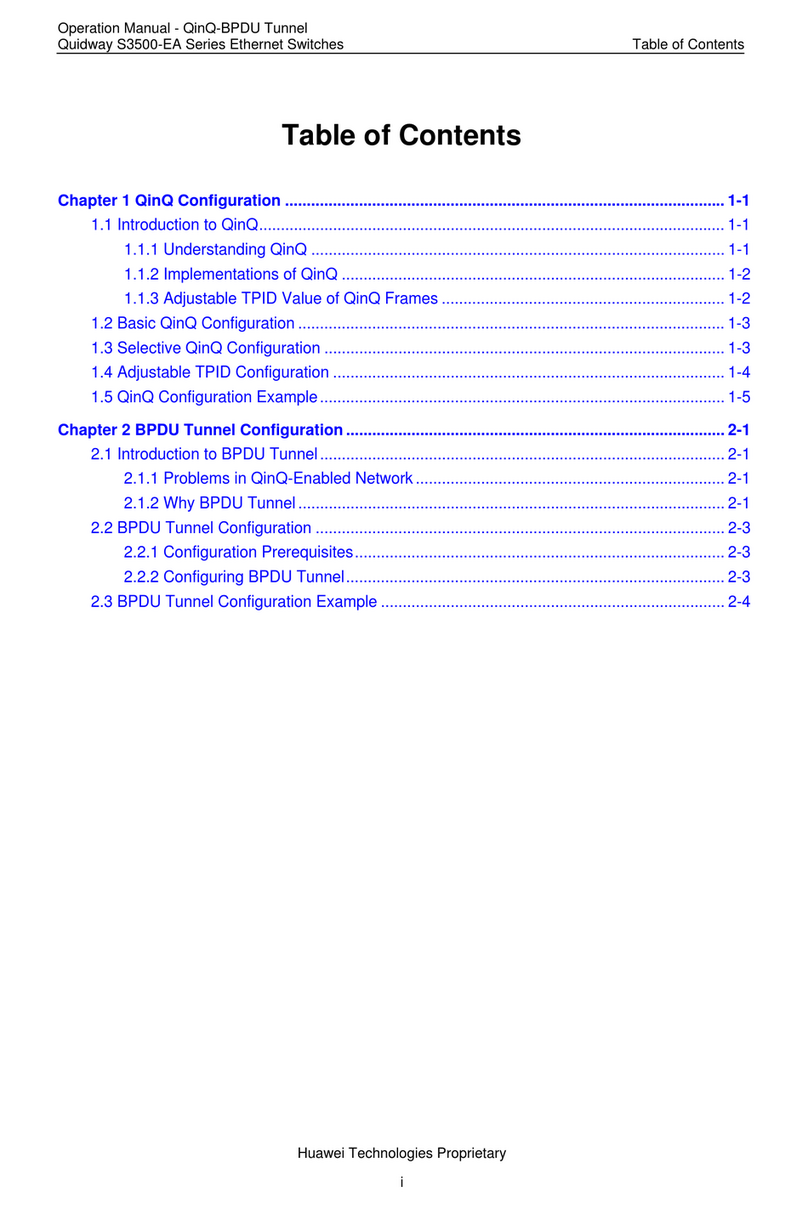Operation Manual - Security
Quidway S3000 Series Ethernet Switches Table of Contents
i
Table of Contents
Chapter 1 802.1x Configuration...................................................................................................1-1
1.1 802.1x Overview................................................................................................................1-1
1.1.1 802.1x Standard Overview......................................................................................1-1
1.1.2 802.1x System Architecture....................................................................................1-1
1.1.3 802.1x Authentication Process................................................................................1-2
1.1.4 Implement 802.1x on Ethernet Switch ....................................................................1-3
1.2 Configure 802.1x................................................................................................................1-3
1.2.1 Enable/Disable 802.1x ............................................................................................1-4
1.2.2 Set the Port Access Control Mode..........................................................................1-4
1.2.3 Set Port Access Control Method.............................................................................1-5
1.2.4 Check the Users that Log on the Switch via Proxy.................................................1-5
1.2.5 Set Supplicant Number on a Port............................................................................1-6
1.2.6 Set to Enable DHCP to Launch Authentication.......................................................1-6
1.2.7 Configure Authentication Method for 802.1x User..................................................1-7
1.2.8 Set the Maximum times of authentication request message retransmission..........1-7
1.2.9 Set the handshake period of 802.1x .......................................................................1-8
1.2.10 Configure Timers...................................................................................................1-8
1.2.11 Enable/Disable quiet-period Timer........................................................................1-9
1.3 Display and Debug 802.1x.................................................................................................1-9
1.4 802.1x Configuration Example.........................................................................................1-10
Chapter 2 AAA and RADIUS Protocol Configuration ................................................................2-1
2.1 AAA and RADIUS Protocol Overview................................................................................ 2-1
2.1.1 AAA Overview.........................................................................................................2-1
2.1.2 RADIUS Protocol Overview ....................................................................................2-1
2.1.3 Implement AAA/RADIUS on Ethernet Switch.........................................................2-2
2.2 Configure AAA...................................................................................................................2-3
2.2.1 Create/Delete ISP Domain......................................................................................2-3
2.2.2 Configure Relevant Attributes of ISP Domain.........................................................2-4
2.2.3 Create a Local User ................................................................................................ 2-5
2.2.4 Set Attributes of Local User ....................................................................................2-5
2.2.5 Disconnect a User by Force....................................................................................2-6
2.3 Configure RADIUS Protocol ..............................................................................................2-7
2.3.1 Create/Delete a RADIUS server Group..................................................................2-8
2.3.2 Set IP Address and Port Number of RADIUS Server .............................................2-8
2.3.3 Set RADIUS Packet Encryption Key.......................................................................2-9
2.3.4 Set Response Timeout Timer of RADIUS Server.................................................2-10
2.3.5 Set Retransmission Times of RADIUS Request Packet.......................................2-10































